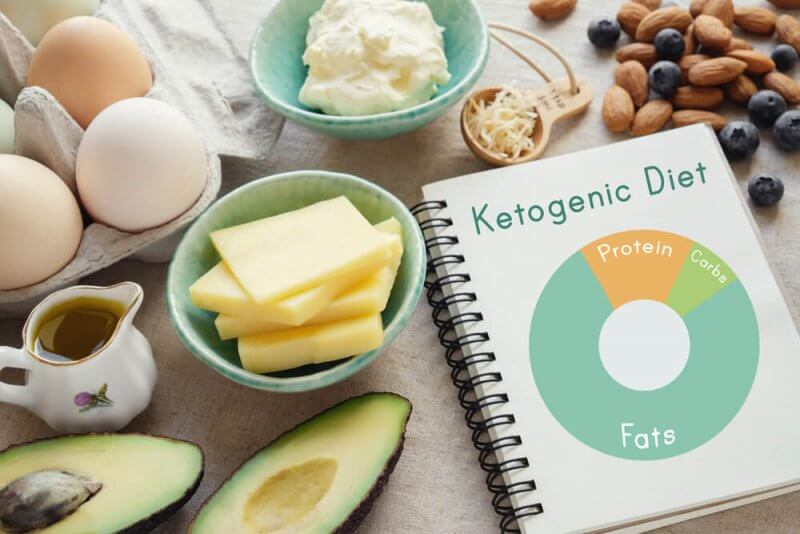How long can you go without eating?
What are ketones- We all fast while we sleep (unless you get up for a midnight snack). That’s why the first meal of the day is referred to as breakfast – it breaks the fast.
Although most people in modern society seem unable to go more than a few hours without food, it actually turns out that the human body is designed to fast.
Fasting creates ketones.
What are Ketones?
Before the proliferation of grocery stores and fast food chains, food was not as plentiful. There were cycles of feast and famine. In times of feast, the body stores excess calories as body fat reserves, so that during times of famine the cells are able to use the stored body fat as a fuel source. Think about a bear fattening up in autumn for a long winter of hibernation and emerging in the spring lean and hungry.
Most people think of carbohydrates as the primary fuel source of the body. However, in times of carbohydrate deprivation, most of the cells in the body are able to use fat for fuel, except for those in the brain. As the muscles and other organs begin to burn fat, the liver starts to produce ketone bodies. Also known as ketones, ketone bodies act as a fuel source for the brain.
When the brain begins to use ketones for fuel, cognitive ability and mental focus increase, bodily functions become more efficient, and fat metabolism kicks into high gear. This is referred to as ketosis or the Keto Zone.
It turns out, ketosis is actually the natural state of human metabolism. From the moment human children are born and begin consuming mother’s milk, they are in a mild state of ketosis. It is not until the introduction of a consistent supply of high sugar and starch foods that a human’s metabolism will switch out of a state of ketosis.
As children we begin consuming copious amounts of candies, breads, pastries, pastas, and treats and over time the metabolism loses its ability to use fat for fuel.
Repair Your Metabolism
Chronic carbohydrate consumption is the result of decades of low-fat diet advice combined with the myth that it’s best to eat every couple of hours to keep the metabolism strong. Which is only because everyone is addicted to sugar!
In fact, the average American will consume around 66 pounds of added sugar per year! And this number doesn’t even include the carbohydrates from all the bread, potatoes, pasta, biscuits, tortillas, chips, and crackers that are so common in the American diet as well.
The modern epidemics of obesity, diabetes, and dementia are a direct result of increased sugar consumption. In fact, Alzheimer’s disease is now being called “Type 3 diabetes” by many physicians and researchers.
When blood sugar levels are chronically elevated, the body must produce tremendous amounts of insulin to keep things in balance. Too much insulin for too long reduces the body’s insulin sensitivity leading to prediabetes and eventually Type 2 diabetes.
The excess sugar also switches the body into “feast” mode causing it to store fat for the next famine.
The problem is that in our modern lives we are always in feast mode and the famine never comes.
Thankfully, the solution is easy and natural.
Enter the Keto Zone
The Keto Zone is a state of nutritional ketosis, or keto adaptation, where the cells are burning fat for fuel. This includes belly fat, fat on your thighs, your hips, and even the visceral internal fat which is the most dangerous body fat to have.
The ideal keto diet is high fat, adequate protein, and very low-carb.
- Healthy fats include:
- Extra Virgin Olive Oil
- Coconut Oil
- Avocado and Avocado Oil
- Keto Nuts and Seeds
- Egg Yolks
- Grass-fed Beef Tallow
- MCT Oil Powder
Healthy proteins (in moderate portions) include:
- Wild-Caught Fish (especially salmon and sardines)
- Pasture Raised Poultry (chicken, turkey, quail)
- Grass-fed Beef
- Bison
- Venison
The Keto Zone diet is also high in low-carb keto vegetables and herbs.
This includes copious amounts of leafy greens such as:
- Kale
- Spinach
- Collard Greens
- Chard
- Mustard Greens
- Arugula
- Bok Choy
As well as other cruciferous vegetables like:
- Broccoli
- Cauliflower
- Brussels Sprouts
- Cabbage
Herbs such as:
- Cilantro
- Parsley
- Rosemary
- Sage
- Oregano
It’s also important to get prebiotic fiber from the allium family of vegetables such as:
- Garlic
- Onion
- Chives
- Shallots
- Leeks
To enter the Keto Zone, carbohydrates must stay under 20 grams per day. For a healthy person, it can take around 3 days for full keto adaptation to occur. For those who are prediabetic or who have full blown Type 2 diabetes, it can take 5-7 days or maybe longer.
During the transition period as the body begins to remember how to use fat for fuel and the metabolic pathways for burning fat and ketones are re-established as energy, some people may experience very mild symptoms such as brain fog, fatigue, minor headache, or nausea.
This is referred to as the “keto flu,” due to the flu-like symptoms.
To help combat keto flu symptoms, the Keto Zone diet includes the use of specially designed supplements that increase fat digestion and absorption, balance appetite, and provide adequate fuel for the brain so you can transition effortlessly into the Keto Zone.
Learn more by picking up my newest book “Keto Zone Diet” at www.KetoZone.com, where you can also find all the Keto Zone supplements and lifestyle suggestions.

Is it max 20 net carbs or carbs without deductions for fiber etc
Deduct the fiber for your net carbs.